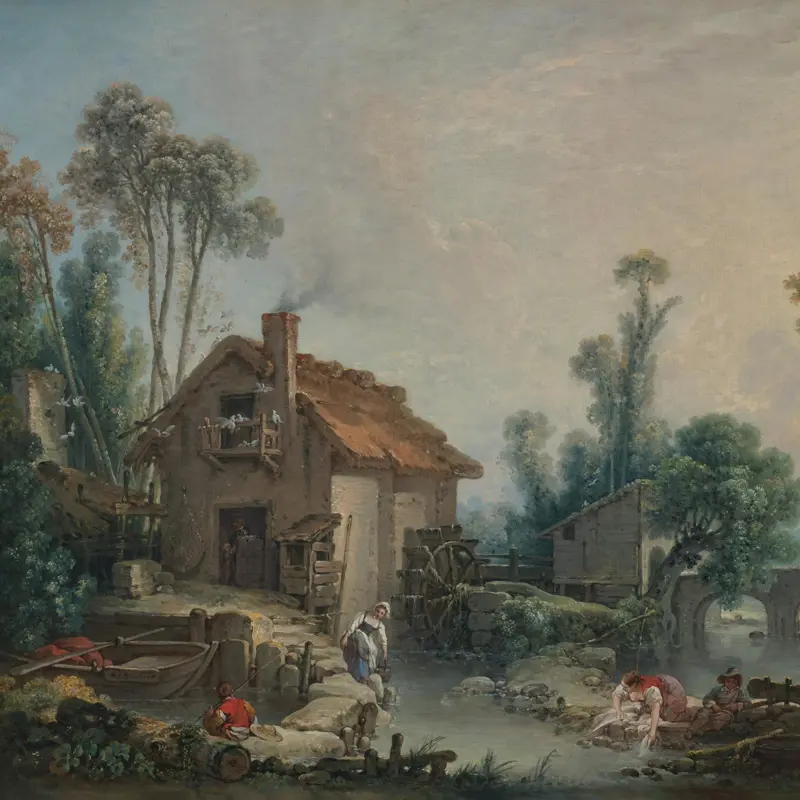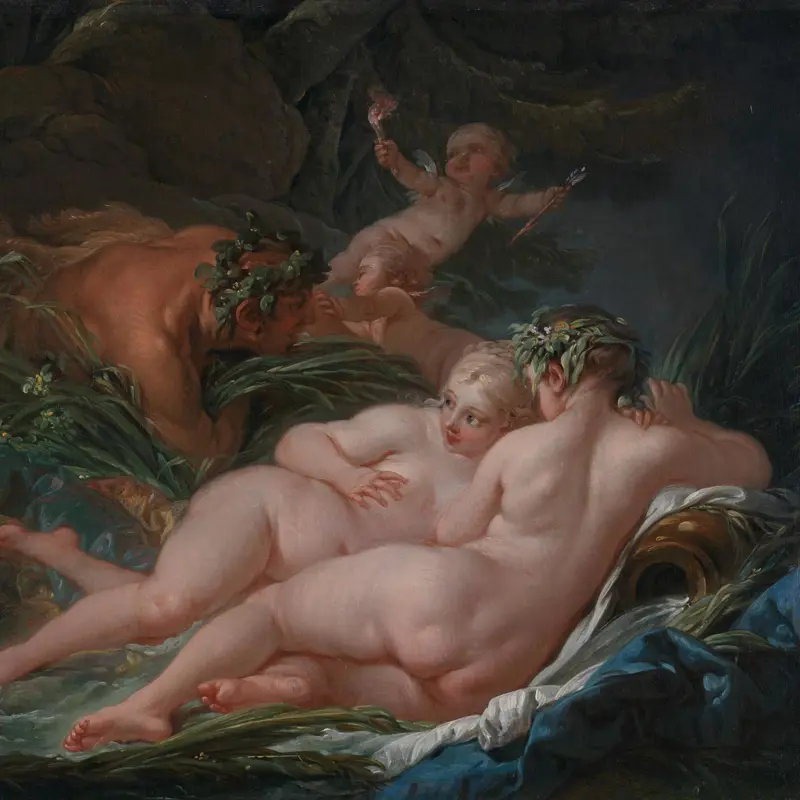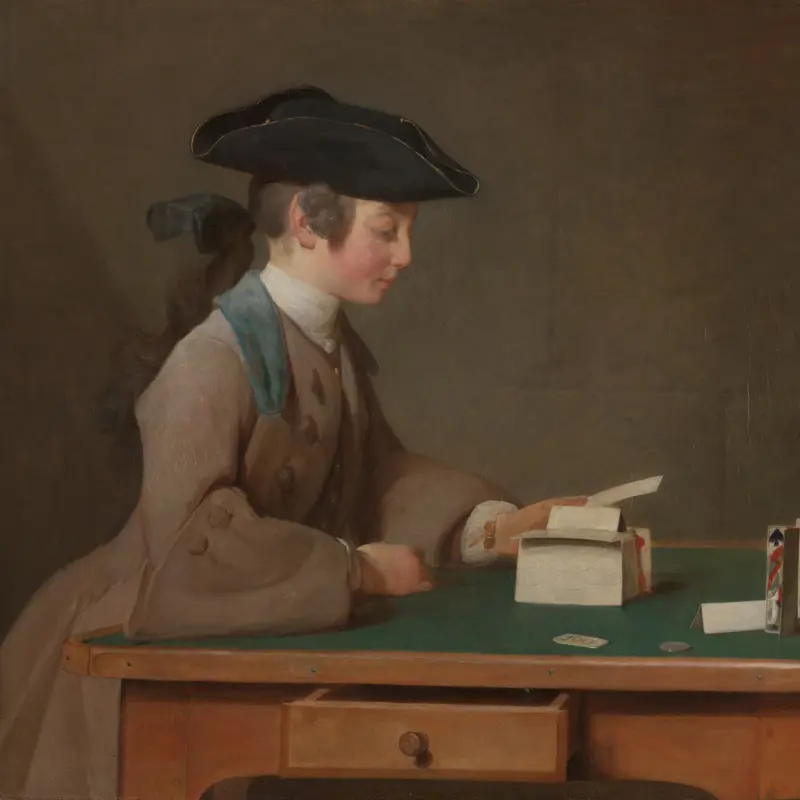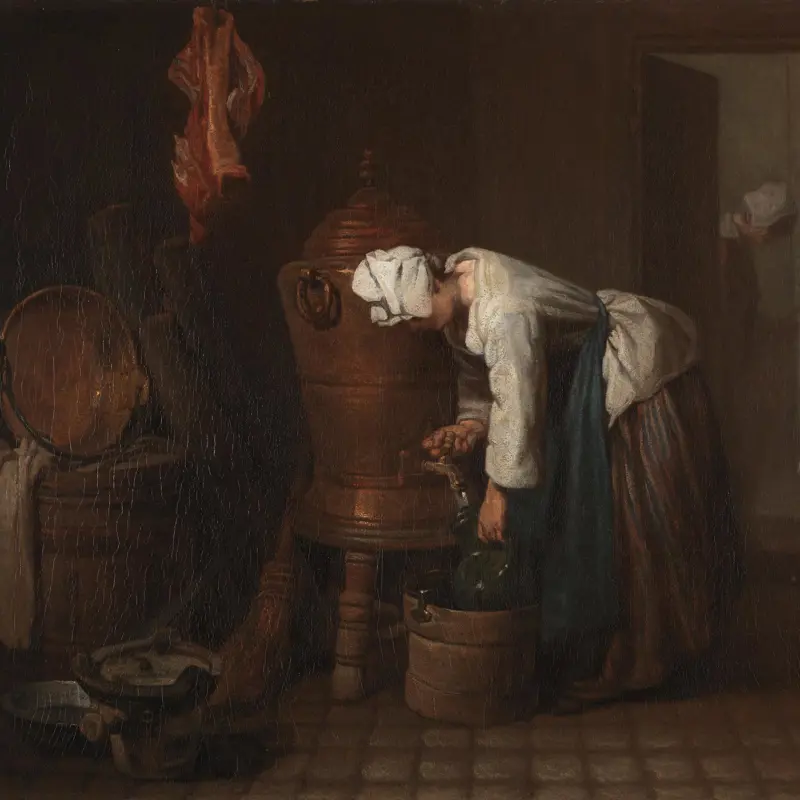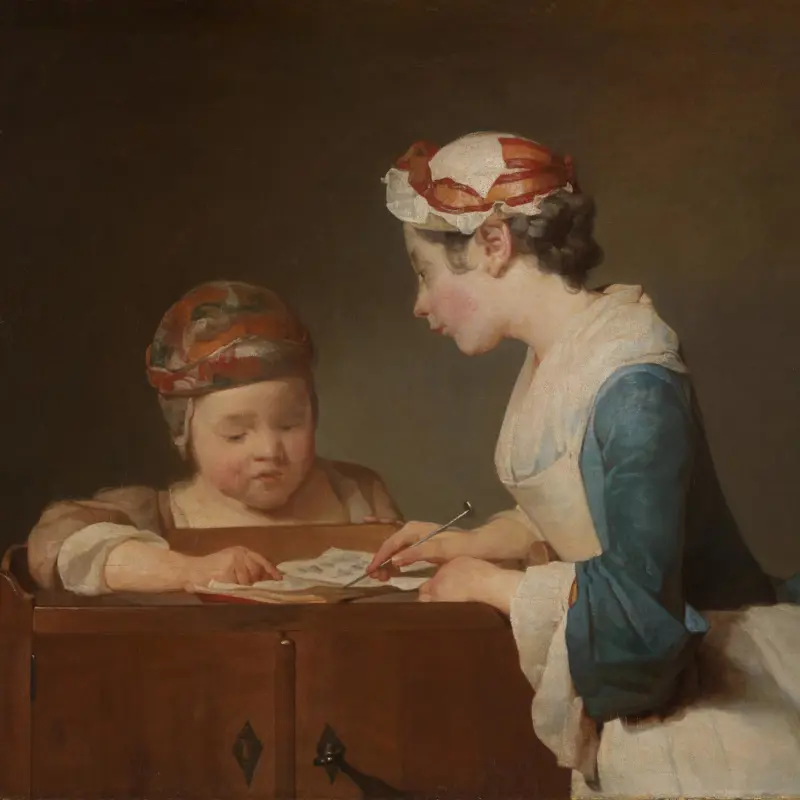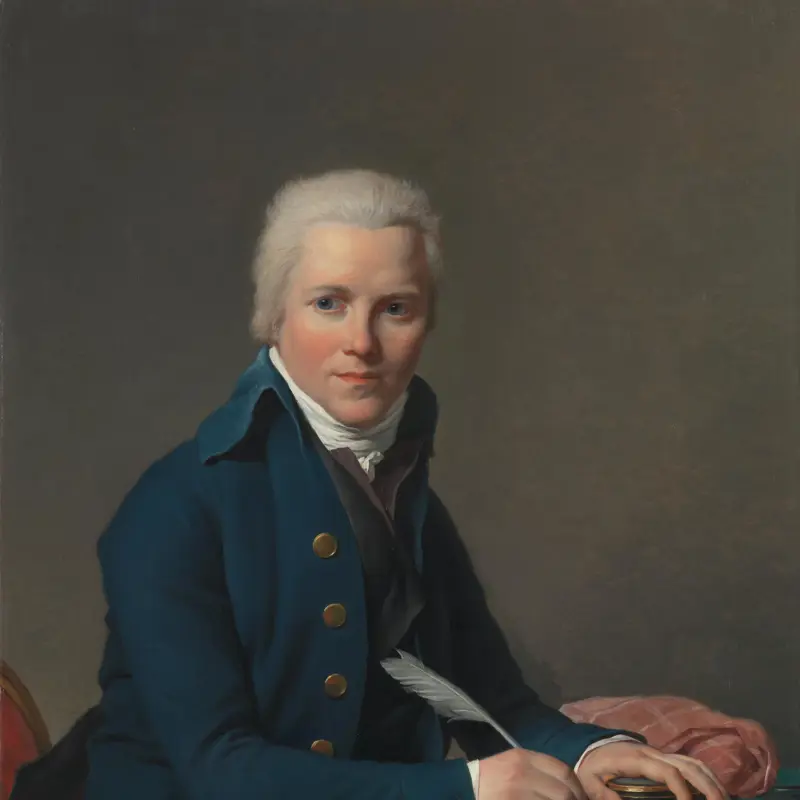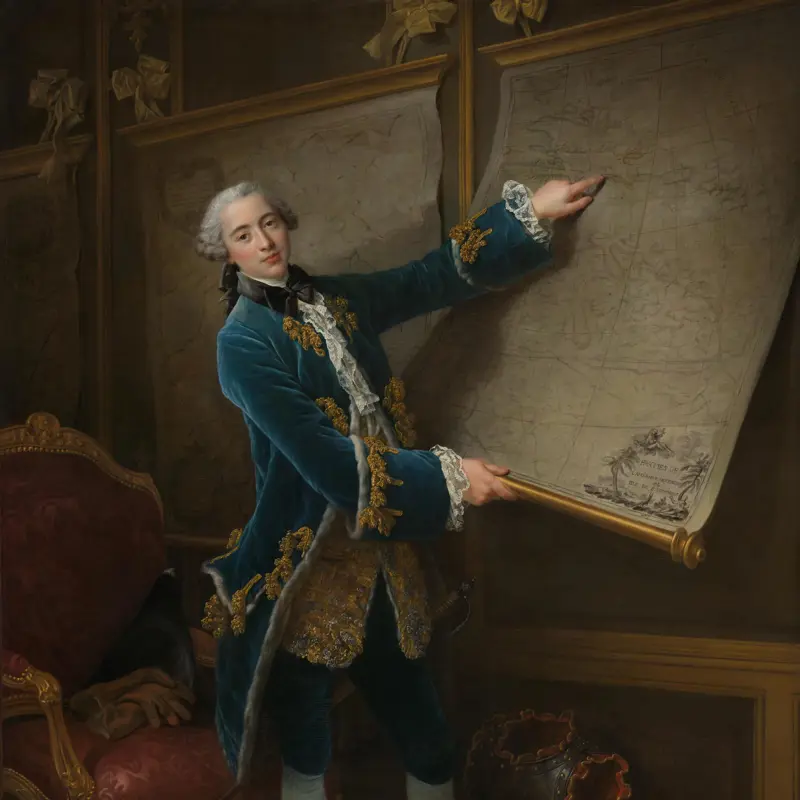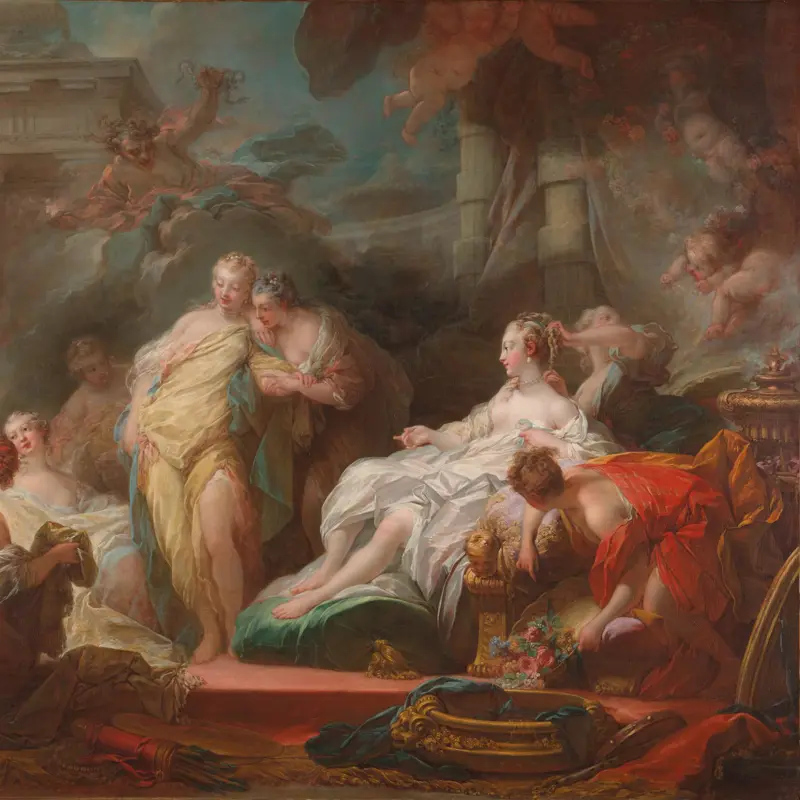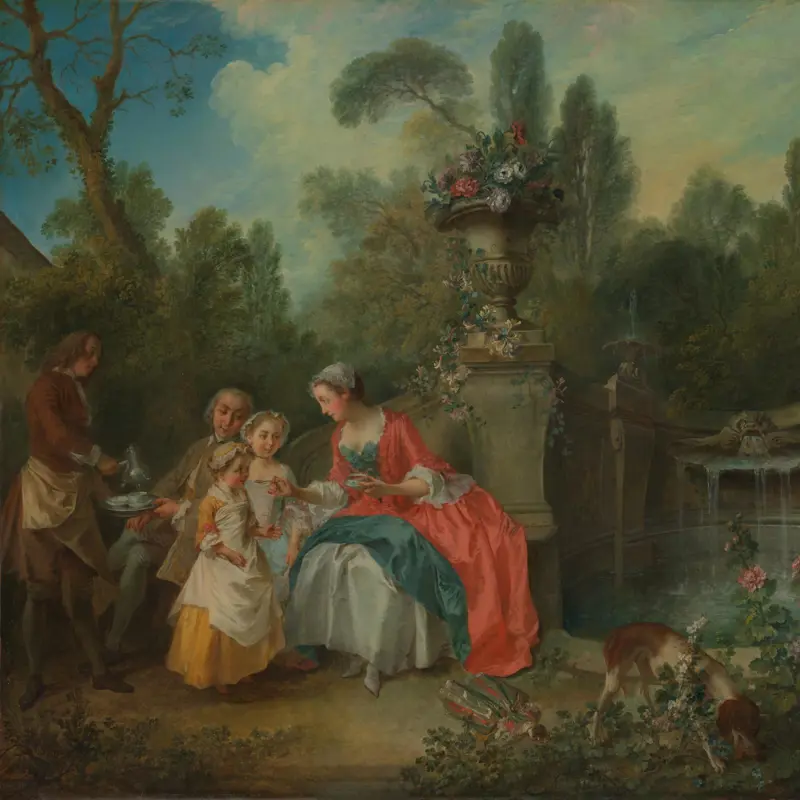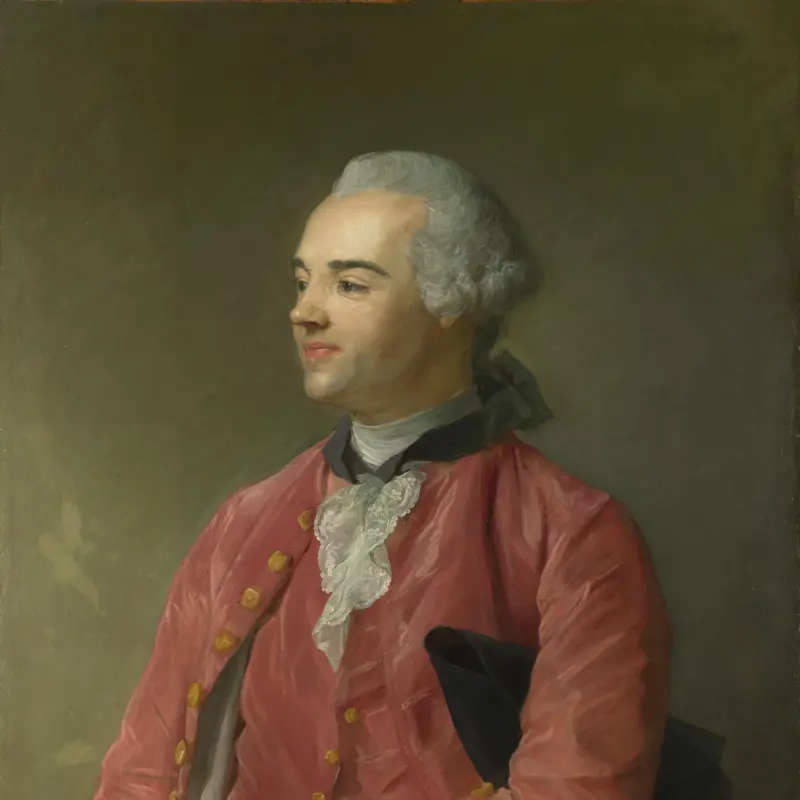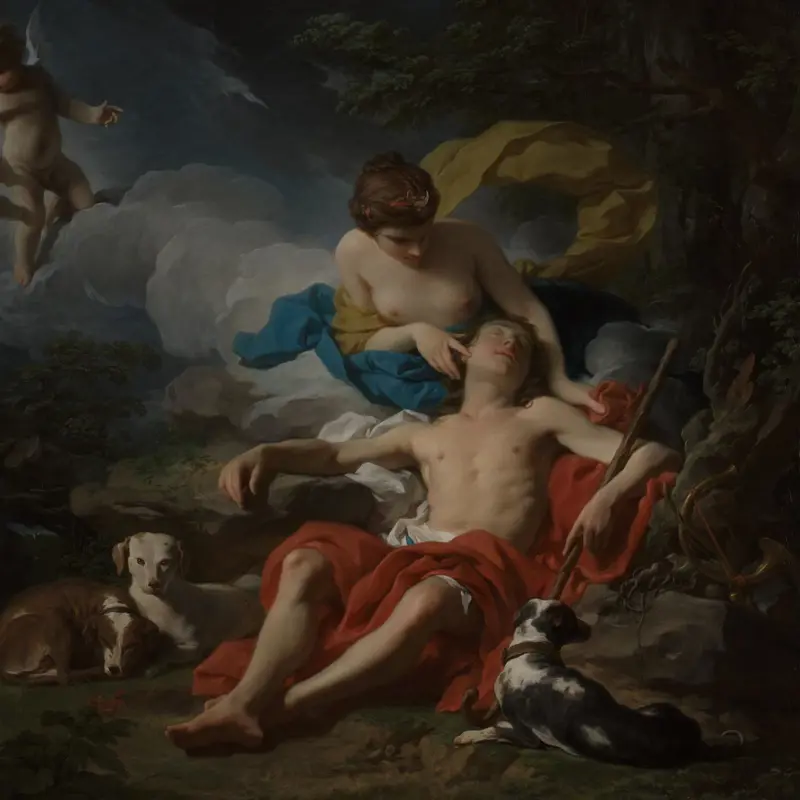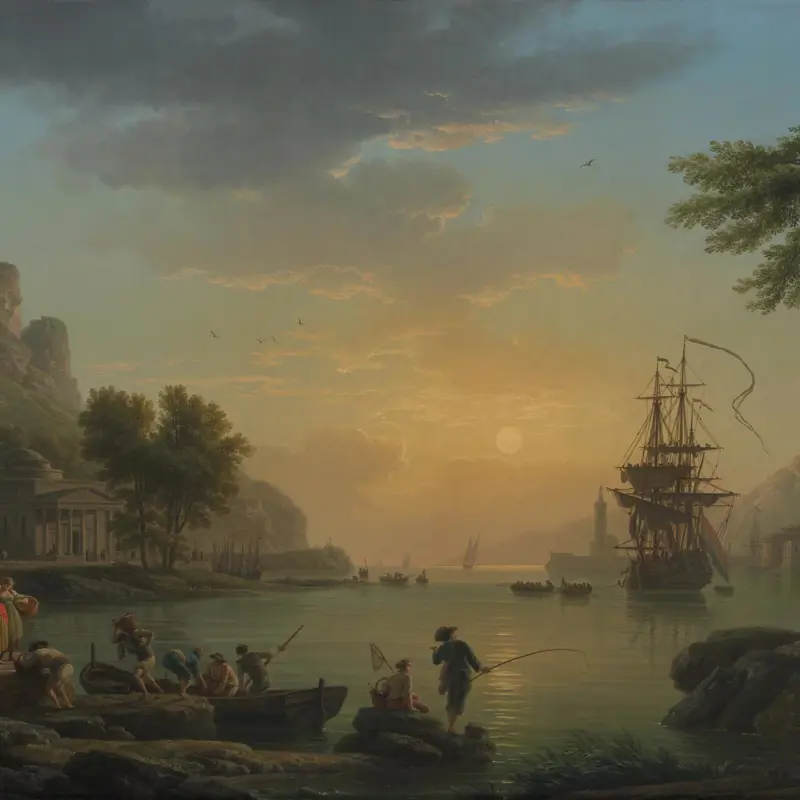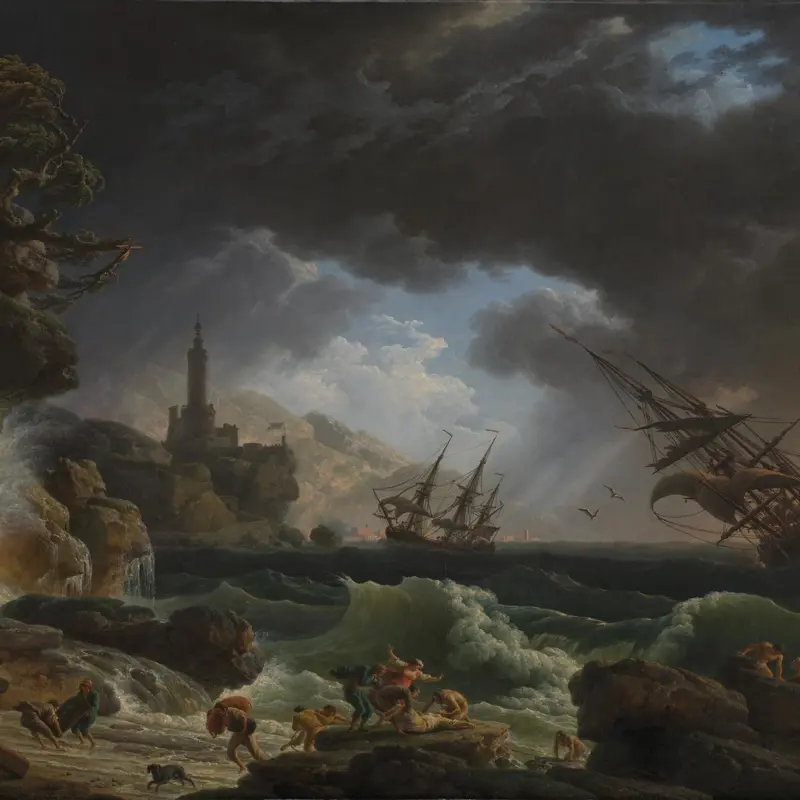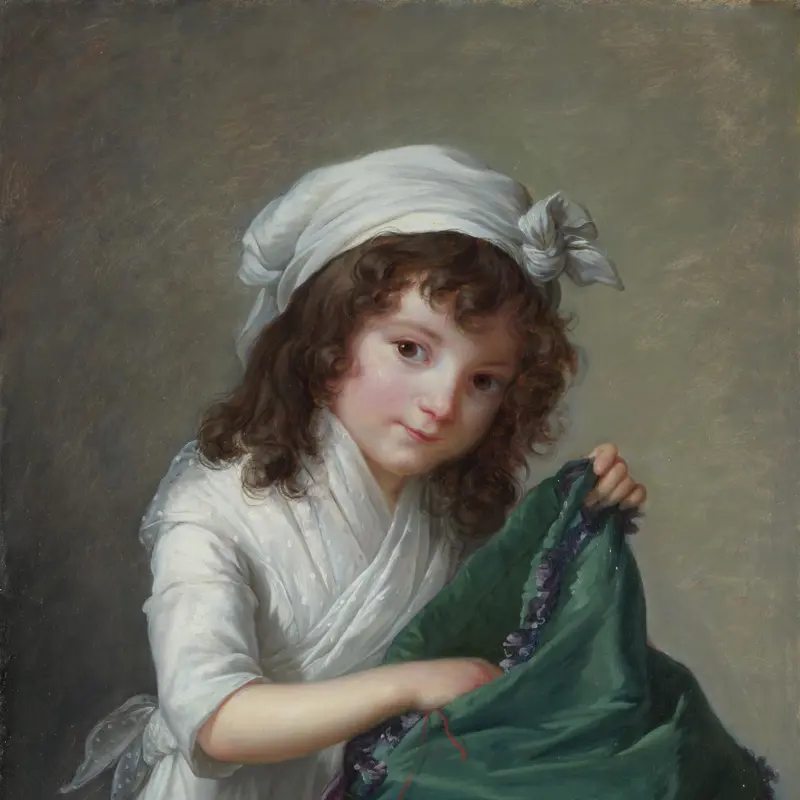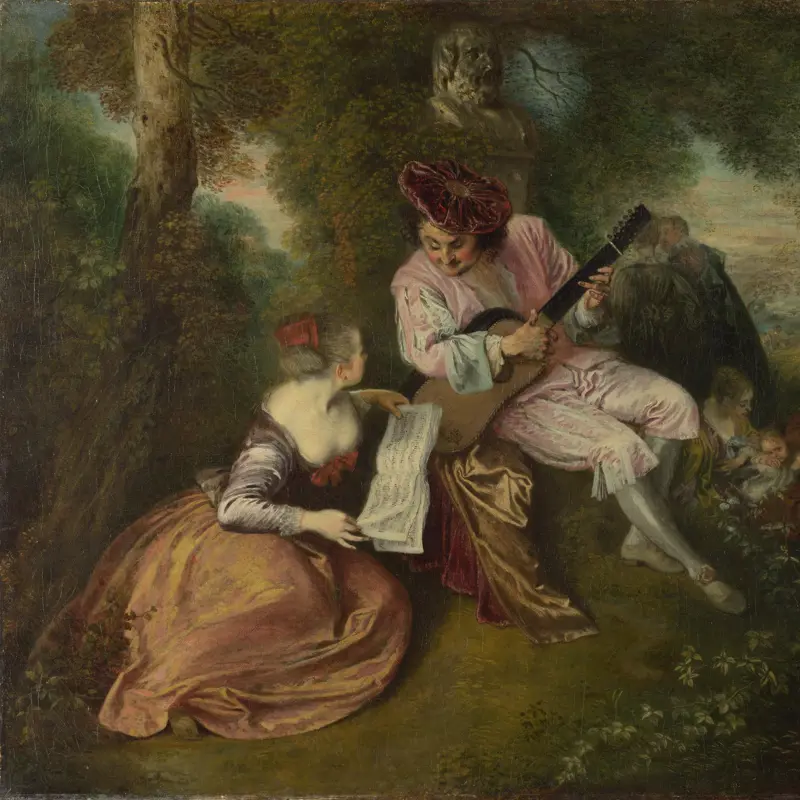Paris was the centre of the European art market in the 18th century and a thriving city of artists. The first half of the 1700s was dominated by the ‘Rococo’, a whimsical decorative style defined by its light, bright colours and curving forms.
Before his untimely death, Jean-Antoine Watteau delighted viewers with his fêtes galantes, exquisite landscapes that explored the themes of love and leisure. François Boucher was the master of pastoral and mythological scenes, equally comfortable painting rustic shepherdesses and radiant goddesses. Jean-Honoré Fragonard – considered early on to be the rising star of grand, serious history painting – shocked the art world by choosing instead to paint intimate, often erotic scenes for private patrons. Described by one critic as ‘the great magician’, Jean-Siméon Chardin astonished his contemporaries with his radiant still lifes and quiet, enigmatic scenes of everyday life.
By the 1770s tastes had changed towards a more austere ‘Neoclassical’ style. Fashions – both in dress and in painting – moved away from the frivolous towards crisper lines and more sober designs. The French Revolution, which began in 1789 and saw the destruction of the French monarchy, marked a definite shift in art as well as politics.


